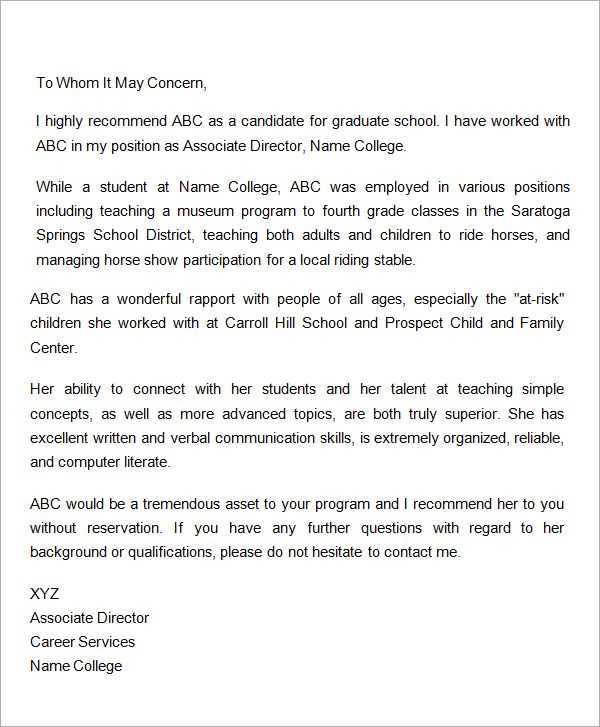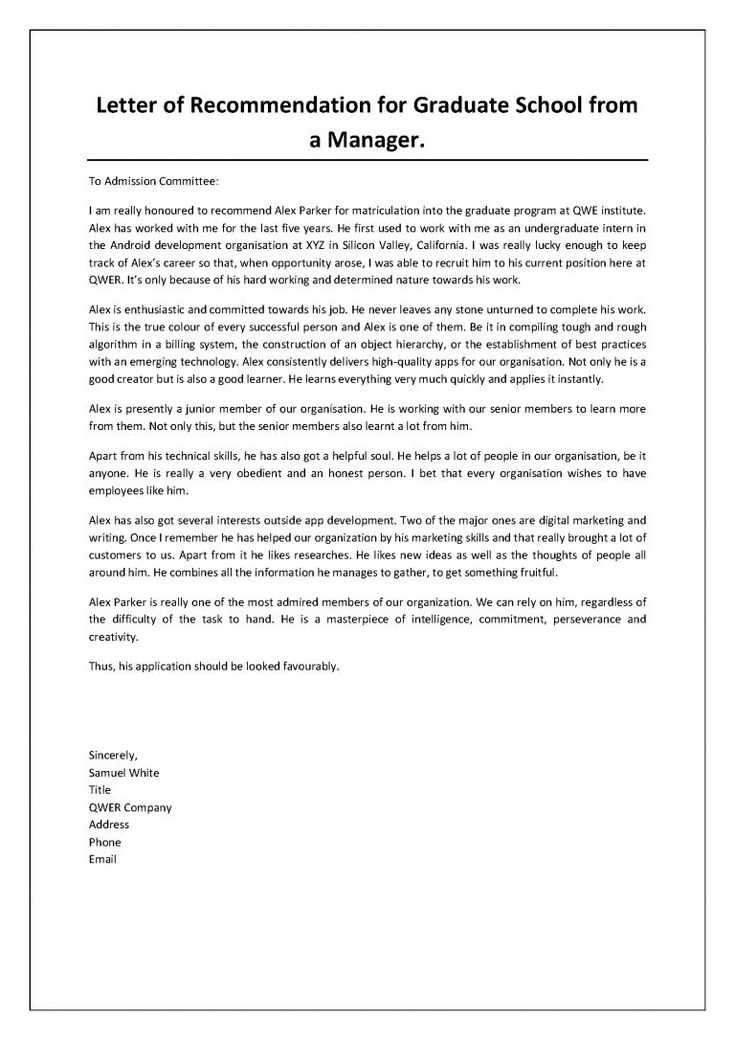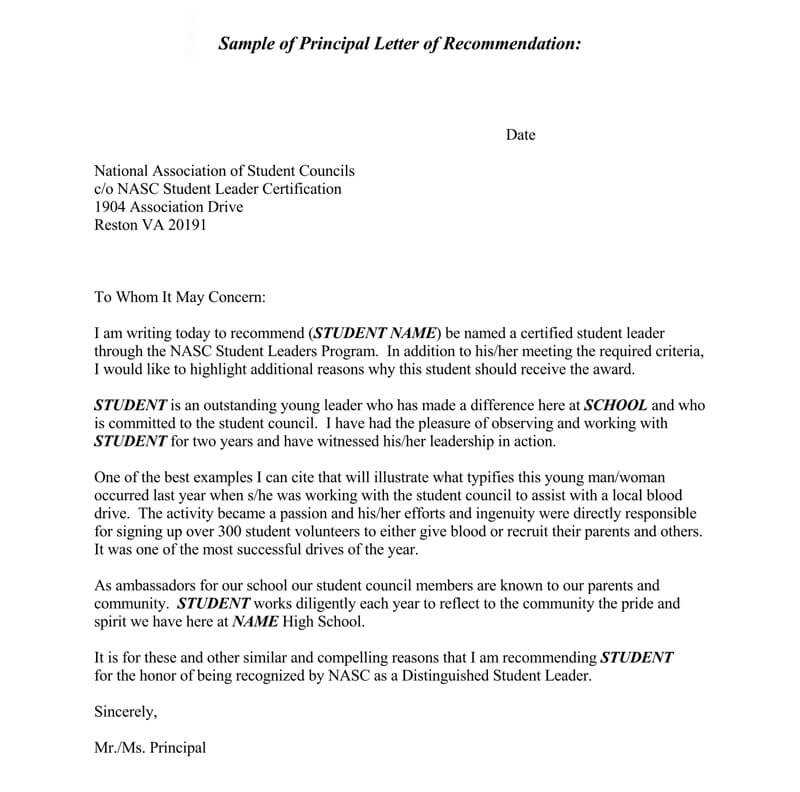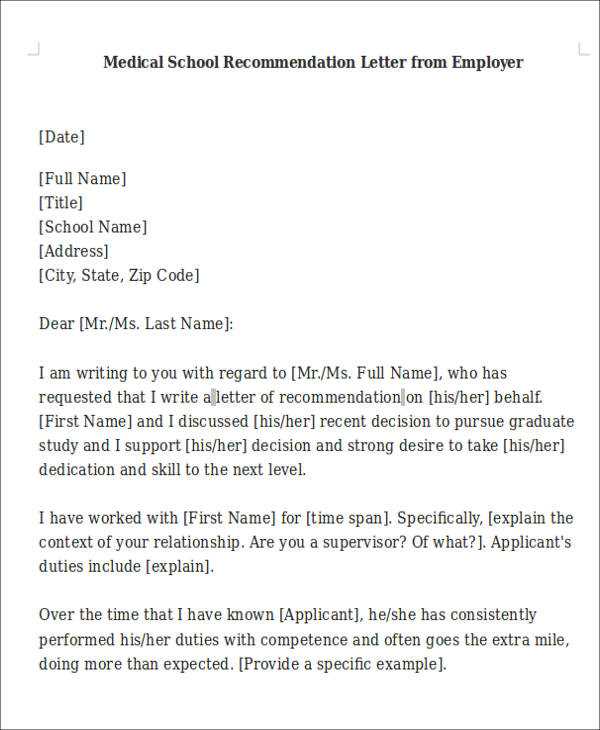School Recommendation Letter Template for Students

When it comes to applying for higher education, having a strong endorsement can make a significant difference. A well-crafted support document can highlight your strengths, accomplishments, and character traits in a way that truly stands out to selection committees.
Creating a compelling endorsement requires a clear structure, thoughtful content, and a personal touch. It should offer specific examples of the candidate’s abilities and achievements, helping to paint a vivid picture of why they are a worthy candidate for admission or a particular program.
Whether you are writing on behalf of a student or crafting your own, it’s important to understand the nuances that make these endorsements effective. From tone to details, the content should align with the applicant’s unique qualities while maintaining a professional and respectful approach. With the right format, you can ensure your words leave a lasting impact.
Why Recommendation Letters Matter for Schools

In the competitive world of academic admissions, a glowing endorsement can be the key to standing out among a sea of applicants. These documents offer insights beyond grades and test scores, providing a deeper look into a candidate’s character, work ethic, and potential. When carefully written, they can leave a lasting impression that helps to shape the decision-making process of admissions committees.
The Impact on Admission Decisions
Admissions officers often review numerous applications and must quickly assess which candidates stand out. A well-written endorsement can give a more personal and humanized perspective on an applicant, helping them make more informed choices. It often serves as a tie-breaker between two otherwise equally qualified individuals, showcasing qualities such as leadership, dedication, and perseverance that are not always evident from academic records alone.
Building Trust with Institutions
Endorsements also help to establish trust between applicants and institutions. When an influential individual vouches for a candidate, it serves as an external validation of the applicant’s skills and character. This external input assures the school that the student is not only academically capable but also a good fit for the community and values of the institution.
| Key Benefit | Why It Matters |
|---|---|
| Provides Character Insights | Shows personal qualities like determination, responsibility, and teamwork. |
| Highlights Achievements | Offers concrete examples of accomplishments that go beyond academic performance. |
| Strengthens Application | Adds weight to the application, making it more well-rounded and convincing. |
Key Elements of a Strong Recommendation

For an endorsement to be impactful, it must be more than just a formal document. It should offer a clear, detailed, and engaging portrayal of the individual’s capabilities and character. The key to crafting an effective message lies in capturing both the candidate’s academic strengths and personal qualities in a way that resonates with the reader.
Specific Examples of Achievements
A strong recommendation doesn’t just state that the individual is talented–it provides concrete examples that highlight their abilities. Whether it’s a project they led, a challenge they overcame, or a unique contribution they made, the endorsement should demonstrate how the candidate stands out through real-life scenarios. These examples not only support the claims made but also help the reader visualize the candidate in action.
Clear Personal Attributes
Equally important is the inclusion of personal traits that reflect the individual’s overall character. These might include attributes like perseverance, leadership, teamwork, and creativity. A compelling endorsement should offer insight into the person’s attitude, values, and how they interact with others. These qualities often weigh just as heavily as academic achievements in the decision-making process.
How to Start Your Recommendation Letter
The beginning of any endorsement plays a crucial role in capturing the reader’s attention. It’s essential to open with a strong, clear statement that immediately conveys your relationship with the candidate and why they deserve attention. The first few lines should establish credibility, provide context, and set the tone for the rest of the message.
Introduce Yourself and Your Role
Start by explaining who you are and how you know the individual. This establishes your authority and the context in which you’re writing. Be sure to mention your professional position and any relevant experience that strengthens your perspective.
- State your title and position
- Describe your relationship to the candidate (e.g., teacher, mentor, supervisor)
- Include the length of time you’ve known the person
Clarify the Purpose of the Endorsement

It’s important to clearly state the reason you’re writing the endorsement. Let the reader know if the individual is applying for a particular program, position, or opportunity. This helps focus the narrative and sets expectations for the rest of the content.
- Explain why you are writing the document
- State the opportunity or program the individual is seeking
- Provide context on what makes the candidate a great fit
Tips for Personalizing Your Letter
To make your endorsement stand out, it’s essential to personalize it in a way that reflects the individual’s unique qualities and experiences. A generic message will likely be overlooked, while a tailored one that highlights specific strengths and achievements can have a lasting impact. Personalization not only showcases the candidate’s skills but also demonstrates your genuine understanding of their character.
One of the most effective ways to personalize your message is by focusing on the candidate’s individual accomplishments. Refer to specific projects, tasks, or challenges they have faced, and describe how they approached them. This not only highlights their abilities but also shows how they stand out from others.
Another strategy is to relate their experiences to the position, program, or opportunity they are applying for. By drawing connections between their skills and the specific requirements of the program, you provide a stronger case for why they are the perfect fit.
Common Mistakes to Avoid in Letters
While writing an endorsement, it’s easy to fall into certain traps that can undermine the effectiveness of your message. Even well-meaning endorsements can lack impact if they contain common errors. Being aware of these pitfalls ensures your writing is both professional and persuasive, giving the candidate the best possible chance to succeed.
Being Too Vague
One of the most frequent mistakes is writing in generalities. Phrases like “They are a great student” or “They are hard-working” don’t provide enough substance to make a real impact. Instead, focus on specific examples that highlight the individual’s strengths in detail. By illustrating their abilities with concrete instances, you make your endorsement far more powerful.
Over-exaggeration or False Praise
While it’s important to show enthusiasm, it’s equally important to avoid over-exaggerating. Praise should be genuine and backed by real examples. Over-stating the candidate’s abilities or making unrealistic claims can make your endorsement sound insincere. Stick to authentic examples that reflect the true strengths of the individual to maintain credibility.
Formatting and Structuring Your Letter
The layout and organization of your endorsement play a crucial role in making it both easy to read and compelling. A well-structured document allows the reader to quickly grasp the key points and ensures that the message flows logically. Proper formatting reflects professionalism and attention to detail, which strengthens the overall impact of the endorsement.
Organizing Your Content
Begin with a clear introduction that explains who you are, your relationship to the individual, and the purpose of the endorsement. Follow this with the body, where you provide specific examples of the candidate’s qualities and accomplishments. Finally, conclude with a strong closing statement that reinforces your support for the candidate and invites the reader to contact you for further information.
Maintaining Readability
Use short paragraphs and bullet points to break up large blocks of text. This makes the document visually appealing and helps the reader navigate through your points. Ensure that your tone is formal yet approachable, and keep your language clear and concise. A well-spaced and easy-to-read document is more likely to leave a positive impression.